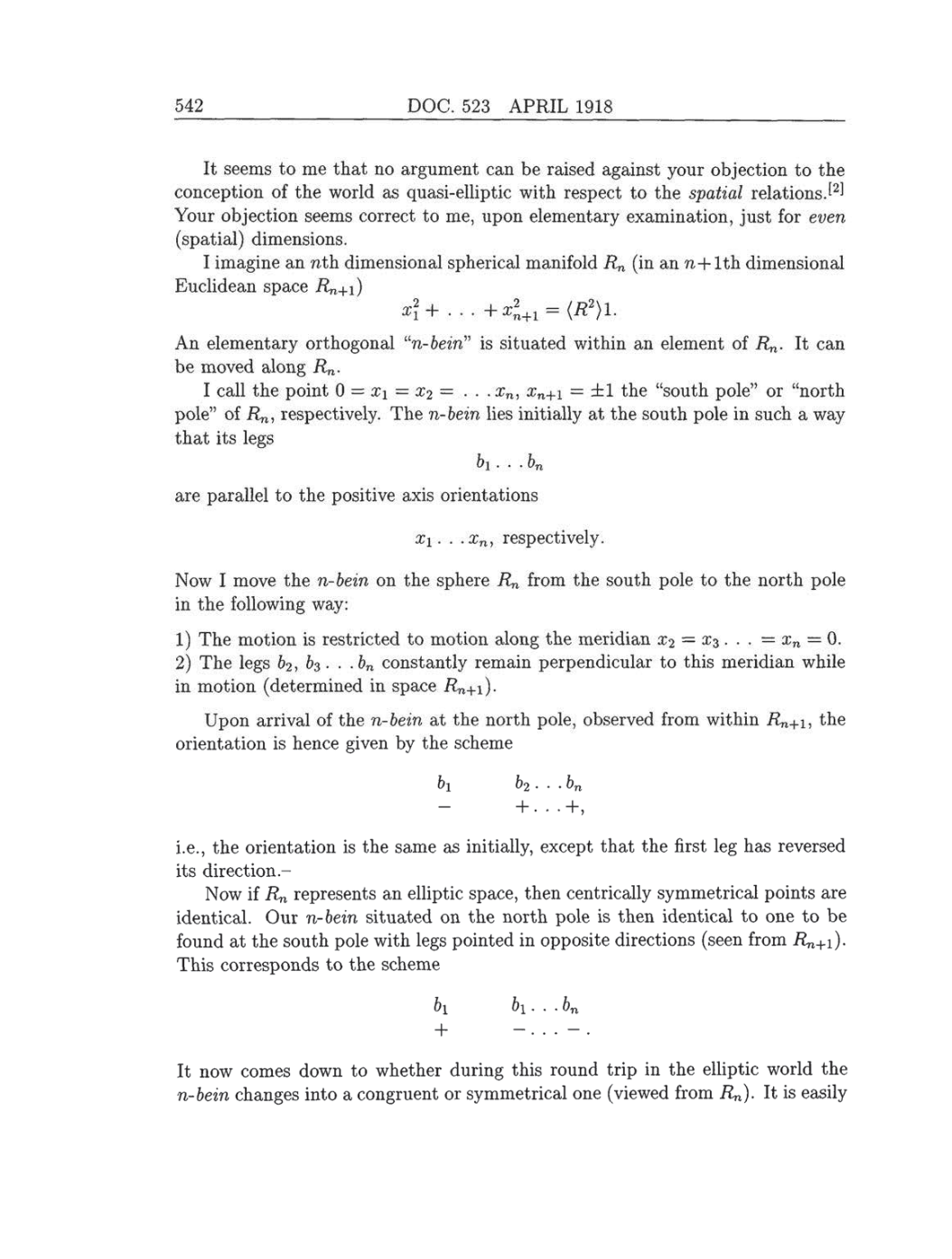542 DOC.
523
APRIL
1918
It
seems
to
me
that
no argument can
be
raised
against your objection
to
the
conception
of
the
world
as
quasi-elliptic
with
respect
to
the
spatial
relations.[2]
Your
objection
seems
correct to
me,
upon elementary examination,
just
for
even
(spatial)
dimensions.
I
imagine
an
nth
dimensional
spherical
manifold
Rn (in an
n+1th
dimensional
Euclidean
space
Rn+1)
x12+...+x2n+l
=
R21.
An
elementary
orthogonal
"n-bein”
is
situated
within
an
element
of
Rn.
It
can
be moved
along
Rn.
I
call
the
point
0
= x1
=
x2
=
...
xn,
xn+1
=
±1
the
“south
pole”
or
“north
pole”
of
Rn, respectively.
The
n-bein
lies
initially
at
the south
pole
in such
a
way
that
its
legs
b1
...
bn
are
parallel
to
the
positive
axis
orientations
x1 ...
xn,
respectively.
Now I
move
the n-bein
on
the
sphere
Rn
from
the
south
pole
to
the north
pole
in
the
following way:
1)
The motion
is
restricted
to
motion
along
the
meridian
x2
=
x3
•••
=
xn
=
0.
2)
The
legs
b2,
b3
...
bn
constantly
remain
perpendicular to
this
meridian while
in
motion
(determined
in
space
Rn+1).
Upon
arrival
of
the n-bein
at
the north
pole,
observed from within
Rn+1,
the
orientation
is
hence
given by
the
scheme
b1 b2
...
bn
-
+
...
+,
i.e.,
the orientation
is
the
same
as
initially, except
that the
first
leg
has reversed
its
direction
Now
if
Rn represents
an
elliptic space,
then
centrically symmetrical points are
identical.
Our
n-bein
situated
on
the north
pole
is
then
identical
to
one
to be
found
at
the south
pole
with
legs
pointed
in
opposite
directions
(seen
from
Rn+1).
This
corresponds
to
the
scheme
b1 b1
...
bn
+
It
now comes
down to
whether
during
this round
trip
in
the
elliptic
world
the
n-bein
changes
into
a congruent or
symmetrical
one
(viewed
from
Rn).
It
is
easily
